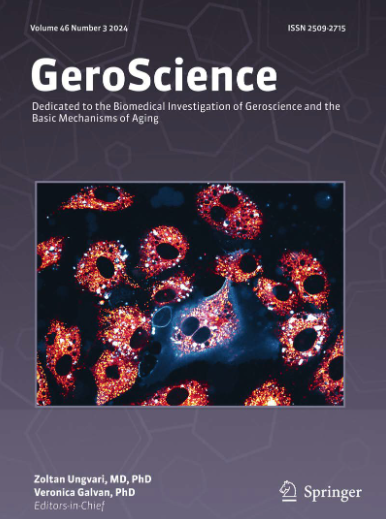Subclinical knee extensor weakness predicts gait and balance impairment in degenerative cervical myelopathy.
IF 5.4
2区 医学
Q1 GERIATRICS & GERONTOLOGY
引用次数: 0
Abstract
Degenerative cervical myelopathy (DCM) is a leading cause of non-traumatic spinal cord disorders in older adults. Gait instability and balance dysfunction are common in DCM, even in the absence of clinically evident lower limb weakness. We hypothesized that subclinical weakness, measured through maximal voluntary isometric contractions (MVICs) of the knee extensors and ankle plantar flexors, is associated with impaired gait and balance in individuals with DCM. Pre-surgical DCM participants with symptoms of DCM and MRI evidence of cervical spinal cord compression were prospectively enrolled in this observational study. Knee extensor and ankle plantar flexor MVICs of the self-reported most-affected leg were measured using a Biodex system. Berg Balance Scale (BBS) scores, gait speed and spatiotemporal gait parameters, and the modified Japanese Orthopedic Association score (mJOA) were recorded. Multivariable regression assessed associations between MVICs and gait/balance outcomes, controlling for age and sex. Data from 32 DCM participants (11 females; mean age 59.1 ± 10.7 years) were analyzed. Knee extensor MVICs showed significant positive correlations with gait speed (r = 0.38, p = 0.001), mJOA lower extremity scores (r = 0.41, p = 0.019), and BBS scores (r = 0.44, p = 0.007). These associations remained significant in multivariable linear regression models adjusted for age and sex. Ankle plantar flexor MVICs were not significantly associated with any outcomes (p > 0.05). Knee extensor MVICs reflect subclinical lower extremity weakness and are associated with impaired gait and balance in DCM. MVIC is a promising objective method to quantify motor impairment in DCM.亚临床膝伸肌无力预测退行性颈椎病的步态和平衡障碍。
退行性颈脊髓病(DCM)是老年人非创伤性脊髓疾病的主要原因。步态不稳定和平衡功能障碍在DCM中很常见,即使在临床上没有明显的下肢无力。我们假设,通过膝关节伸肌和足底屈肌的最大自主等长收缩(mvic)测量的亚临床无力与DCM患者的步态和平衡受损有关。具有DCM症状和MRI证据的术前DCM参与者前瞻性地纳入了这项观察性研究。使用Biodex系统测量自我报告的最受影响腿的膝关节伸肌和踝关节足底屈肌mvic。记录Berg Balance Scale (BBS)评分、步态速度和时空步态参数以及修正的日本骨科协会评分(mJOA)。多变量回归评估了mvic与步态/平衡结果之间的关系,控制了年龄和性别。分析了32名DCM参与者(11名女性,平均年龄59.1±10.7岁)的数据。膝关节伸肌mvic与步速(r = 0.38, p = 0.001)、mJOA下肢评分(r = 0.41, p = 0.019)、BBS评分(r = 0.44, p = 0.007)呈显著正相关。这些关联在调整了年龄和性别的多变量线性回归模型中仍然显著。踝关节足底屈肌mvic与预后无显著相关性(p < 0.05)。膝关节伸肌mvic反映亚临床下肢无力,并与DCM患者的步态和平衡受损有关。MVIC是一种很有前景的量化DCM运动损伤的客观方法。
本文章由计算机程序翻译,如有差异,请以英文原文为准。
求助全文
约1分钟内获得全文
求助全文
来源期刊

GeroScience
Medicine-Complementary and Alternative Medicine
CiteScore
10.50
自引率
5.40%
发文量
182
期刊介绍:
GeroScience is a bi-monthly, international, peer-reviewed journal that publishes articles related to research in the biology of aging and research on biomedical applications that impact aging. The scope of articles to be considered include evolutionary biology, biophysics, genetics, genomics, proteomics, molecular biology, cell biology, biochemistry, endocrinology, immunology, physiology, pharmacology, neuroscience, and psychology.
 求助内容:
求助内容: 应助结果提醒方式:
应助结果提醒方式:


